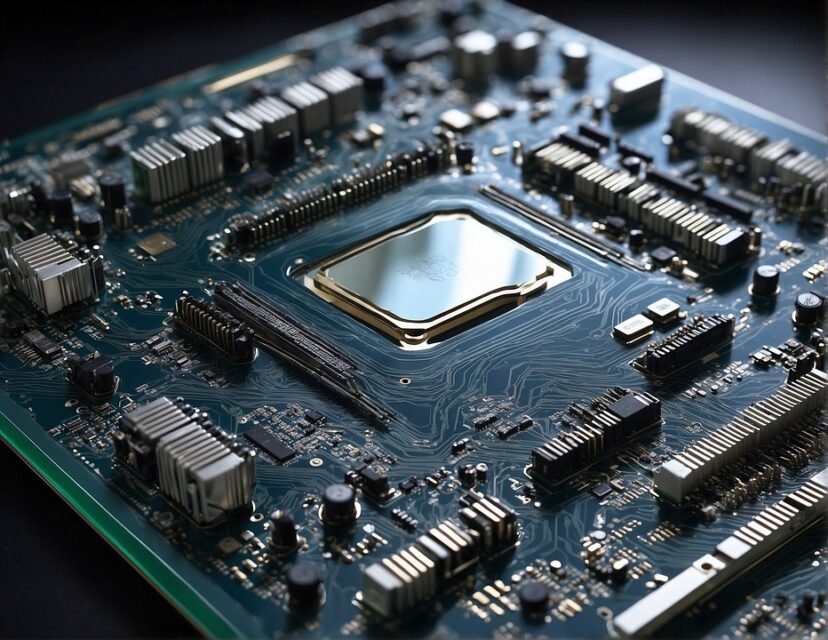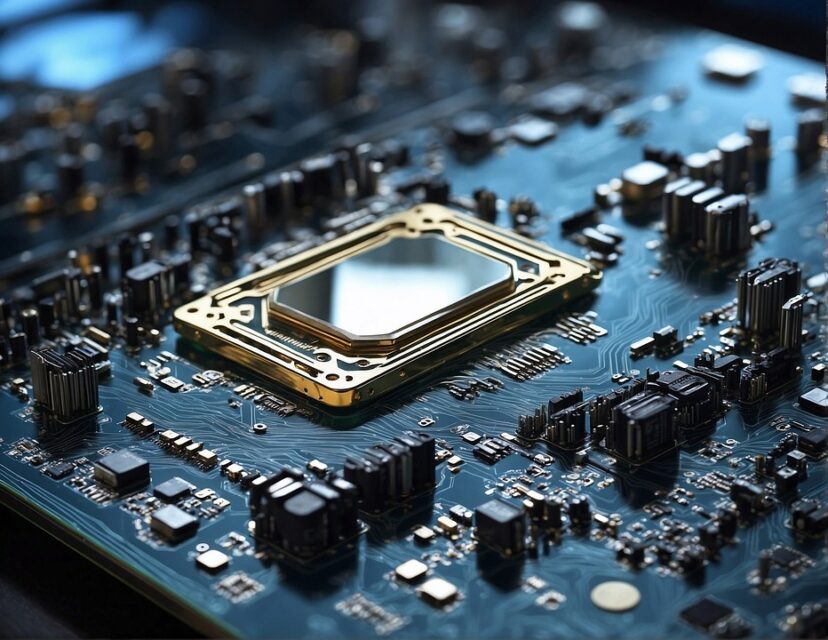TPU (Tensor Processing Unit) was created by Google, a specialized hardware accelerator intended primarily for machine learning applications, especially neural network processing.
It is not a graphics card similar to those found in workstations or gaming PCs. Although their functions are different, graphics cards and TPUs both speed up computing in particular areas.
Graphics cards, commonly referred to as GPUs (Graphics Processing Units), are ideal for jobs like video editing, gaming, and scientific simulations since they are built for generating graphics and carrying out simultaneous computations.
Conversely, TPUs are designed for deep learning applications, such as neural network inference and training.
They significantly outperform conventional CPUs in matrix multiplication operations and other computations frequently employed in machine learning techniques.
Is There Anything Like a TPU Graphics Card?

It should be noted that a graphics card with a TPU does not exist. The Tensor Processing Unit, or TPU, as it is commonly known, is a specialized processor created by Google with the express purpose of speeding up machine learning activities.
TensorFlow is an open-source machine learning software library. The type of graphical processing that a graphics card can handle is not intended for TPUs.
In contrast, a graphics card is a part of a computer that produces visuals for a display. It is made to work with intricate visuals and screens with a lot of resolution.
They are necessary for activities including using computer-aided design (CAD) software, gaming, and video editing.
Although they are both capable of handling intricate mathematical computations, TPUs and graphics cards are designed for distinct purposes. A graphics card has greater functionality.
It’s true that there isn’t a TPU graphics card, although there appears to be some misunderstanding between these two categories of processing units.
Let’s explain these two and understand more
TPU (Tensor Processing Unit): Actually, Google created this specific chip to speed up machine learning activities, particularly ones that require a lot of neural networks.
TPUs are not ideal for general graphics processing, but they are incredibly effective for this particular use. The term “Tensor Processing Unit” (TPU) refers to specialized hardware accelerators that Google built for machine learning applications, particularly for processing tensor-based computations and neural networks.
They are designed to speed up workloads involving deep learning, such as inference and training. To increase the effectiveness and performance of machine learning models, TPUs are frequently employed in cloud-based machine learning systems such as Google Cloud Platform (GCP).
Since TPUs are primarily designed for machine learning activities rather than graphics processing, they are not commonly used for gaming or graphics rendering.
Graphics Card (GPU): The computer component called the graphics card (GPU) is in charge of rendering visuals on your monitor.
GPUs are great at processing intricate graphics and high-definition images, which makes them perfect for a variety of jobs, like gaming, video editing, and designing software.
In computers and gaming consoles, graphics cards, often known as GPUs, are hardware components that are mostly used for rendering graphics, visual effects, and images.
They are frequently utilized in scientific simulations, video editing, gaming, and 3D rendering since they are designed for parallel processing.
GPUs are very adaptable and may be used for a variety of computational activities, such as data analysis, machine learning, and scientific computing, in addition to graphics processing.
Prominent GPU producers are NVIDIA and AMD, who create a range of GPUs suited for various uses, such as professional workstations, gaming, and data centers.
Where Do We Find TPU Graphics Card?
TPU Graphics Card are not marketed separately or found in typical gaming PCs because they are not consumer-grade hardware. TPUs are currently mostly utilized in:
- Google Cloud TPUs: Using their cloud platform, Google Cloud provides access to TPUs. Because of this, developers and researchers may use TPU power for machine learning projects without having to spend a lot of money on hardware.
- Systems Designed Specifically For Machine Learning Applications: Big businesses such as Google, Facebook, and Microsoft may have developed systems specifically for machine learning applications that use TPUs.
Is the TPU Graphics Card Still Relevant Till Date?
As earlier mentioned, Tensor Processing Units, or TPUs, are not graphics cards, and their significance is dependent on a variety of circumstances. Here’s a breakdown:
-
TPUs vs. GPUs: Different Roles
TPUs (Tensor Processing Units): Tensor Processing Units, or TPUs, are still highly important! TPUs are excellent at speeding up machine learning workloads because they are specifically made for them.
They are very effective at tasks like image recognition, natural language processing, and training big neural networks because of their unique architecture.
GPUs (Graphics Processing Units): Graphics Processing Units, or GPUs, are still necessary. When it comes to graphics processing, video editing, 3D animation, and high-end gaming, GPUs are still the preferred option.
They are ideal for these applications because of their general-purpose architecture and cores that are tuned for visual activities.
So, which one is relevant? It depends on your needs.
- Machine Learning: If your focus is on machine learning workloads, TPUs offer significant advantages due to their specialized design and efficiency. Google Cloud TPUs provide a way to access this power without needing custom hardware.
- Graphics and Visualization: If your priorities lie in graphics, video editing, or gaming, GPUs are the clear choice. Their ability to handle complex visual tasks is unmatched.
TPUs are a specialized instrument for a particular need (machine learning), not a GPU replacement. TPUs will probably continue to be extremely important for people working in machine learning and related fields as artificial intelligence expands.
Despite the fact that both TPUs and GPUs are hardware accelerators, their functions and workload optimizations differ.
While GPUs are adaptable processors used for a variety of computing activities, including graphics rendering, TPUs are specialized for machine learning applications, especially neural network processing.
Both TPUs and GPUs can handle complex computations, although their intended uses are different. TPUs excel in particular machine learning tasks, whereas GPUs are more versatile for a wider range of applications.
Uses Of Tpu Graphics Card

Some Common Uses Of Tpus Include:
- Training Deep Learning Models: Because of its specific architecture designed for matrix multiplication and other tensor operations frequently employed in machine learning, TPUs can dramatically speed up the training process of deep neural networks.
- Inference: After a model has been developed, TPUs can quicken the inference stage of machine learning models, enabling faster predictions on fresh data.
- Large Scale Data-Processing: TPUs can handle massive amounts of data in a variety of applications, including computer vision, reinforcement learning, and natural language processing.
- Cloud-based Machine Learning Services: Developers and researchers may use TPUs to train and deploy machine learning models at scale by integrating them into cloud-based machine learning platforms like Google Cloud Platform (GCP).
Focus On Machine Learning Workloads
- Image Recognition: TPUs are particularly good at jobs like medical image analysis, object detection in photos and videos, and facial recognition. They are perfect for these applications because of their capacity to manage large datasets and carry out intricate mathematical operations quickly.
- Natural Language Processing (NLP): Large language models that are utilized for chatbot generation, sentiment analysis, and machine translation can be trained using TPUs.
- Training Large Neural Networks: Since sophisticated neural networks are a key component of many AI applications, TPUs are especially well-suited for this type of training. With their high throughput, they can complete training cycles faster than with conventional CPUs.
- Recommender Systems: Personalized recommendations can be generated more quickly by e-commerce platforms and social media recommender systems by utilizing TPUs in their data processing.
- Scientific Computing: TPUs can expedite data analysis and scientific simulations in a variety of domains, including materials research, physics, and drug development.
Benefits of Using TPUs for Machine Learning:
- Faster Training Times: Compared to regular CPUs, TPUs can drastically cut down on the amount of time needed to train sophisticated machine learning models. Faster AI application deployment and development cycles are made possible by this. Because TPUs are designed to do tensor operations, such as matrix multiplication, much more quickly than regular CPUs or even GPUs, they are a popular choice for machine learning applications. Machine learning models benefit from quicker training and inference times as a result.
- Increased Accuracy: Machine learning models with more accuracy may result from TPUs’ high-precision processing capabilities.Compared to CPUs and GPUs, TPUs are made to function well while using less power. Because of this, they are more economical and energy-efficient for processing massive machine learning workloads, particularly in cloud-based setups.
- Cost-Effectiveness: Although TPUs are pricey pieces of hardware, their effectiveness can save money over time by lowering the amount of processing power required to train big models.
- Scalability: TPUs can be used to scale up training huge models over several TPUs in distributed computing environments. As a result, training models can be completed more quickly and with greater capacity without compromising on performance.
- Specialized Architecture: TPUs have dedicated hardware for speeding up matrix operations and neural network computations, and are specifically designed for machine learning activities. For deep learning tasks, TPUs perform better than general-purpose processors thanks to their specialized architecture.
- Cloud Integration: Researchers and developers may readily access TPUs because they are offered as a service on cloud platforms like Google Cloud Platform (GCP). This enables businesses to take advantage of TPUs’ on-demand power without having to invest in expensive hardware infrastructure.
All in all, TPUs are a useful tool for speeding up machine learning activities and advancing artificial intelligence since they provide a number of advantages in terms of speed, efficiency, scalability, and specific architecture.
For businesses and developers handling large-scale machine learning applications, TPUs are essential in speeding up the execution of machine learning activities.
This results in shorter training durations, reduced expenses, and increased scalability.
Conclusion
To summarize, a graphics card is tuned for parallel calculations and graphic rendering in a variety of applications, whereas a TPU is a specialized hardware accelerator built for machine learning workloads.
Depending on the particular computational requirements of the work at hand, they have distinct functions and are employed in various circumstances.
